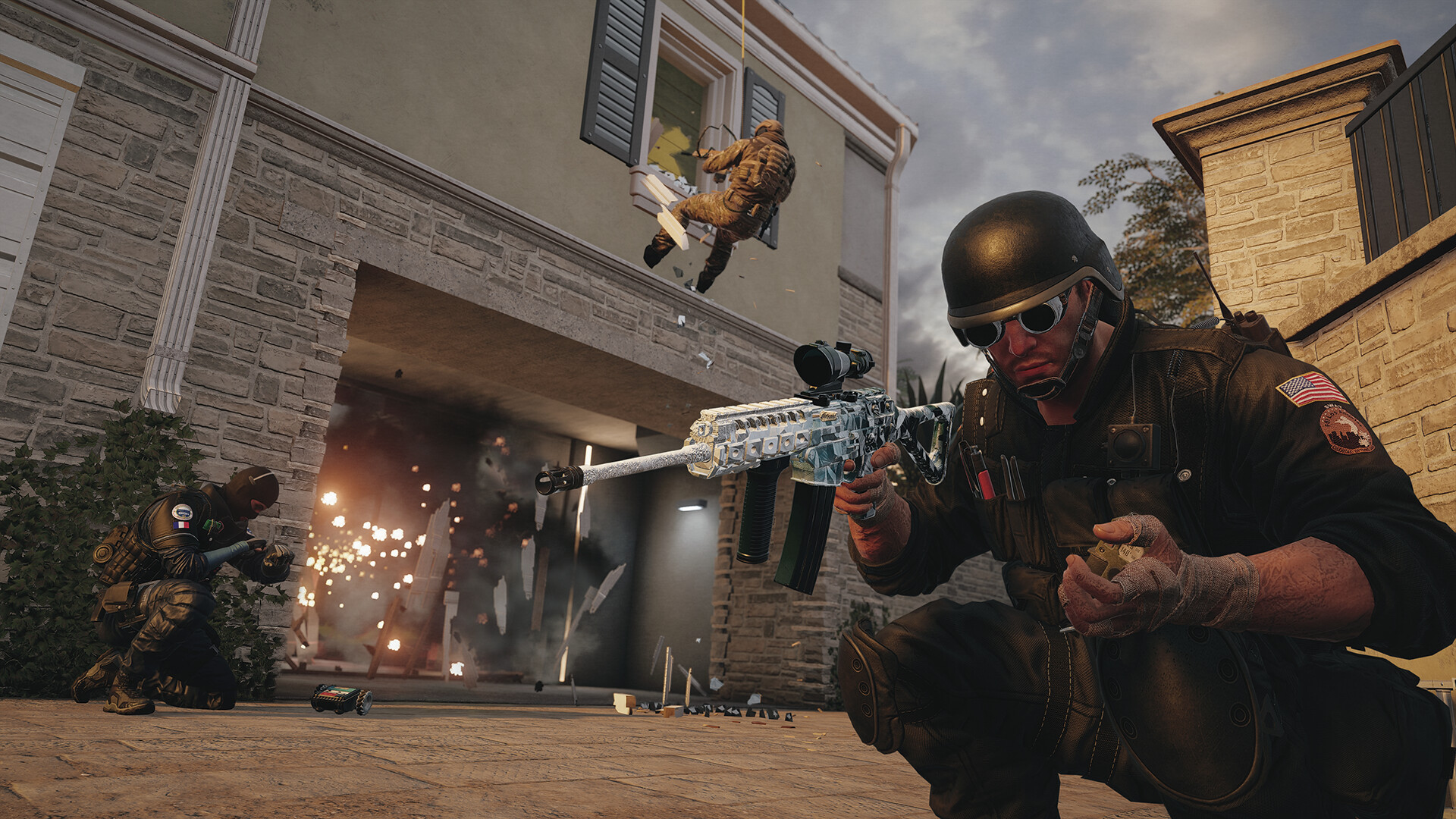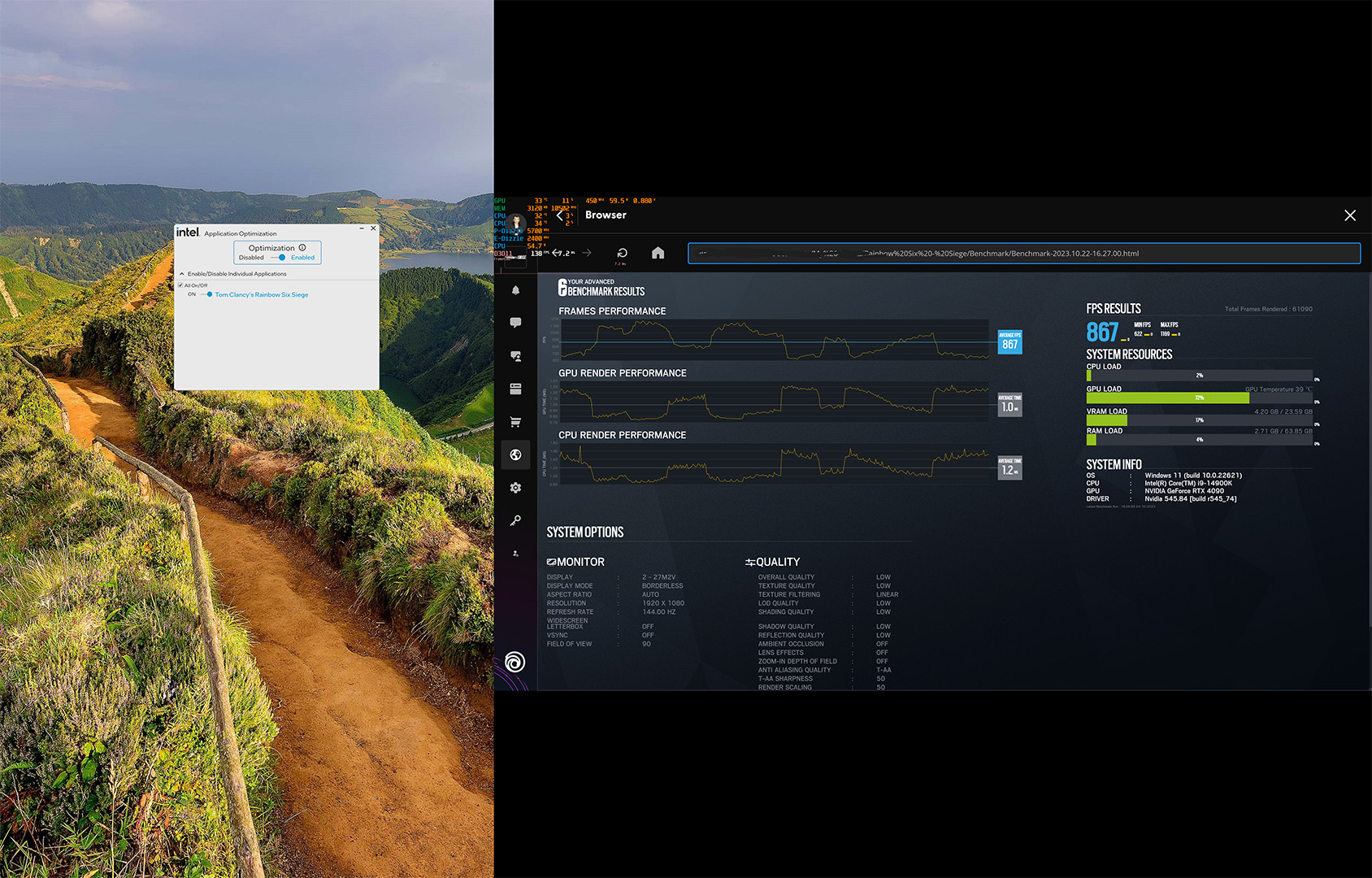Intel's New Application Optimizer Yields Up to 31% Higher Frame Rates On i9-14900K
Reddit user shows huge gaming performance gains, on the two titles supported so far.

Reddit user LightMoisture on the Intel subreddit shared detailed gaming benchmark comparisons of Intel's new Application Optimization (APO) technology working on a Core i9-14900K. The Redditor saw performance improvements of over 200 FPS with Intel's new utility, revealing that the application can provide serious improvements to games.
For testing, LightMoisture used Rainbow Six Siege and Metro Exodus for testing since those are the only two games Intel supports with its new Application Optimization at this current time. In Metro Exodus, the i9-14900K was able to achieve 66 higher FPS with the tuning utility activated, going from 273 FPS to 339 FPS average, a 24% increase in performance.


In Rainbow Six Siege, the performance gains were even more impressive, yielding a 208 FPS difference, going from 659 FPS to 867 FPS with the tuning utility enabled. Percentage-wise, Intel's optimization app yields a 31% increase in performance.
The performance gains LightMoisture has extracted from Intel's Application Optimization feature are shockingly good and far outweigh Intel's official performance estimations of 13% and 16% respectively for Rainbow Six Siege and Metro Exodus. If this level of performance is repeatable on other 14th Gen systems and other titles, Intel could have a really potent performance optimization tool on its hands, that could enable its 14th Gen chips to overthrow AMD's Ryzen 7000 series CPUs with 3D-VCache, at least in some games.
The performance enhancements seen here were made with a new feature baked into Intel's Tuning Utility known as Application Optimization, or APO. This feature utilizes a profile-based system to actively optimize the thread scheduling of supported applications with Intel's supported 14th Gen CPUs (currently the 14900K and 14700K). Details of exactly how it works are pretty scarce, but Intel has confirmed that it works in conjunction with Thread Director.
Unfortunately, only the two aforementioned games are supported at this time, and we don't know how frequently Intel will update its list of supported games/applications. We also don't know if these incredible performance enhancements will be applicable to newer and more demanding games. But if we do see similar performance improvements in other titles in the future, Intel's 14th Gen CPUs could become a lot more interesting and appealing.
Get Tom's Hardware's best news and in-depth reviews, straight to your inbox.

Aaron Klotz is a contributing writer for Tom’s Hardware, covering news related to computer hardware such as CPUs, and graphics cards.
-
tamalero Anyone knows why the hell its locked on the 14th gen?Reply
Everyone and their mother agree that the 14th gen is just a rebadged 13th gen with a few Mhz higher and perhaps a few more cores in. -
Amdlova Reply
NO it's not the same, have the 10+ plus badge on it. 10+++(+)tamalero said:Anyone knows why the hell its locked on the 14th gen?
Everyone and their mother agree that the 14th gen is just a rebadged 13th gen with a few Mhz higher and perhaps a few more cores in.
14 gen is the alpha plus ex edition -
richardvday It's probably locked to the 14th Gen because they want you to buy new cpus because that's where the money is 😕Reply -
thestryker The only dependency they list on the Intel website is DTT which is available for everything 11th gen and newer with Xe based graphics (so for desktop this would be 12th-14th gen).Reply
If it doesn't continue getting expanded over time to cover at least Raptor Lake K SKUs we'll know it's because they don't want to not that it won't work:
Why did Intel only choose to enable Intel® Application Optimization on select 14th Gen processors?Settings within Intel® Application Optimization are custom determined for each supported processor, as they consider the number of P-cores, E-cores, and Intel® Hyperthreading Technology. Due to the massive amount of custom testing that went into the optimized setting parameters specifically gaming applications, Intel chose to align support for our gaming-focused processors.
-
hotaru251 Reply
Intel needed SOME reason to get ppl to buy 14th gentamalero said:Anyone knows why the hell its locked on the 14th gen? -
Kamen Rider Blade Reply
So they're taking a page out of nVIDIA's playbook and locking software features to the latest generation?thestryker said:If it doesn't continue getting expanded over time to cover at least Raptor Lake K SKUs we'll know it's because they don't want to not that it won't work: -
Neilbob Someone give me a prod when there's an example that serves some kind of useful purpose in the real world, such as pushing 50 to 60+ for example.Reply
On the other hand, going from 659 FPS to 867 FPS is useful for marketing purposes I guess ... -
TerryLaze Reply
These are examples of real world improvement, the same technique can be used for any and all examples of performance degradation that people had from the e-cores, where everybody would tell you to just disable them from the bios, now you can keep them and still have full performance.Neilbob said:Someone give me a prod when there's an example that serves some kind of useful purpose in the real world, such as pushing 50 to 60+ for example.
On the other hand, going from 659 FPS to 867 FPS is useful for marketing purposes I guess ...
It's just easier to get a final number if your examples are games with countable FPS. -
cyrusfox Would be very interesting to understand how it is locked to 14th gen and thread director. but I have been running 12th and 13th without thread director (only Windows 11 compatible). I like the direct optimization work being done, allowing programs to interact more intelligently with the platform closer to metal. I think there is lots of room for efficiency improvement in the modern software stack and APO seems to prove that point is true.Reply